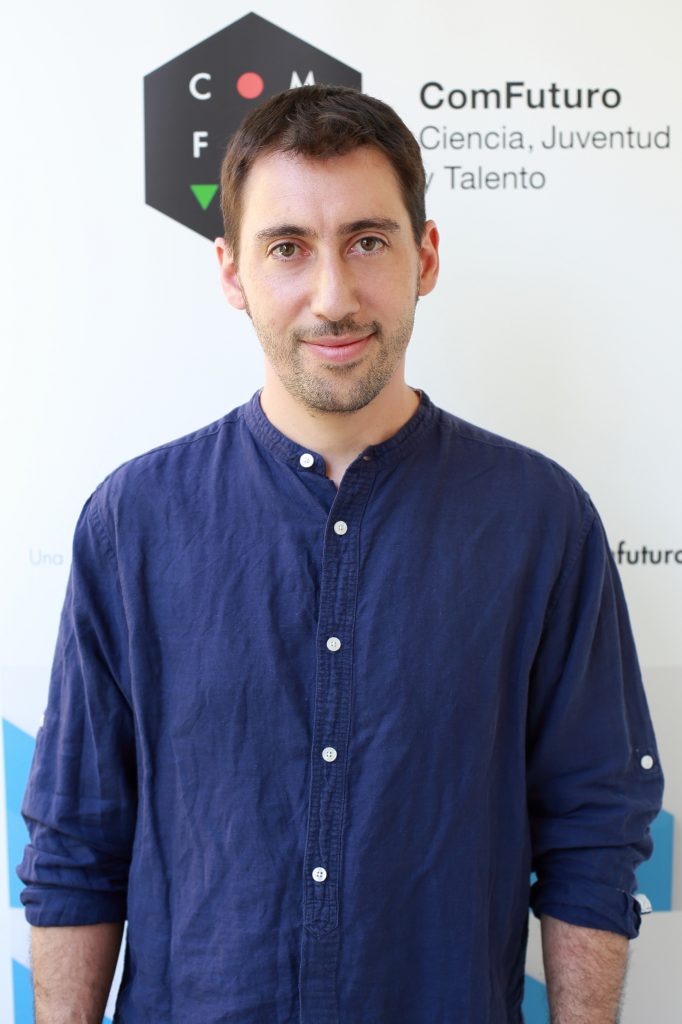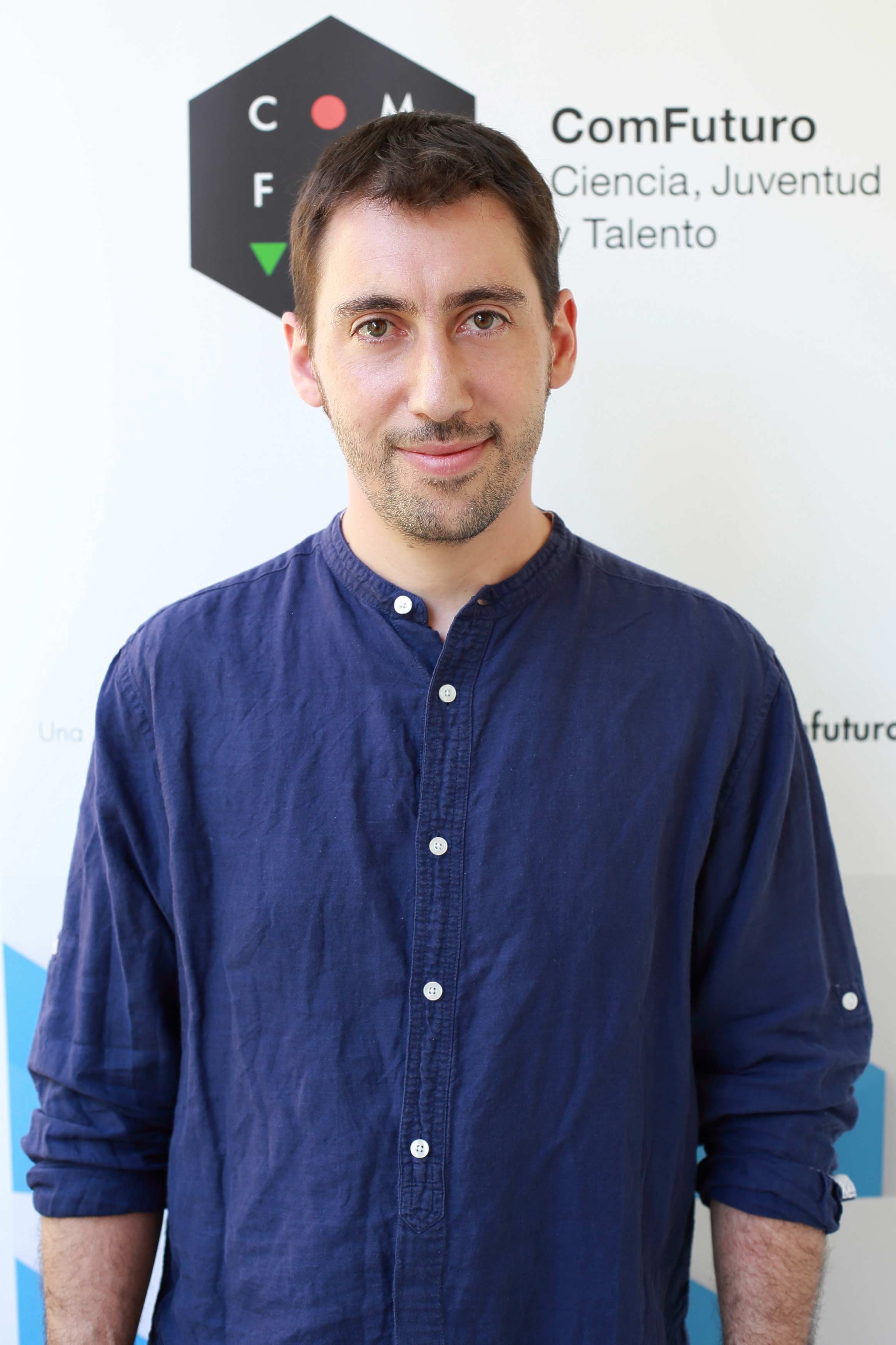
Daniel Matatagui Cruz obtained his bachelor’s degree in Physics in 2007 and a master’s degree in Advanced Materials and Nanotechnologies in 2008, both from the Autonomous University of Madrid (UAM). That same year he joined the Institute of Applied Physics (IFA) of the Spanish National Research Council (CSIC), where he completed his PhD in the Sensors group. In 2012, he obtained the degree of Ph. cum laude by the UAM for his research work “Mass sensors for the detection of chemical and biological warfare agents”. In 2013, with a post-doctoral fellowship, he joined the centre for Applied Sciences and Technological Development of the National Autonomous University of Mexico, where two years later he established himself as a researcher.
On 1 September 2018, he returned to Spain as a ComFuturo researcher at the Institute of Physical and Information Technologies (ITEFI) of the CSIC, where he developed his project “New analytical microsystems based on magnetic nanostructures for the detection of environmental toxins” within the framework of the research line of the “Development of new gas detection sensors and devices“.

Project Summary
Many of the chemical species found in the atmosphere of a multitude of populations and industries have side effects on humans and in many cases can trigger irreversible diseases.
Currently, there are many commercial systems for analysing chemical species in the environment, but often the systems with high sensitivity and selectivity are very costly, robust and difficult to handle, or conversely the microsystems of analysis based on chemical sensors have a low cost and are easy to handle, but in general lack sufficient sensitivity, selectivity or reliability for their application to real problems.
Therefore, any low-cost system capable of performing chemical species monitoring in a reliable manner will have a strong economic impact and greatly improve the citizens’ quality of life.
This project aims to develop devices that can detect very small changes in the magnetic properties of nanostructures when they interact with different chemical species, innovating in the field of chemical sensors by taking advantage of the inherent properties of magnetic nanomaterials.
Finally, the results may lead to functional and miniaturised systems for the analysis of chemical species, that can compete with conventional analysis systems and which may have important repercussions in the fields of health and the environment.
Application: The key objective of the project is to innovate chemical sensors by taking advantage of the inherent properties of nanostructured magnetic materials. These sensors will be integrated into advanced instrumentation to develop novel embedded analytical microsystems that are reliable, portable, very low cost, with very high sensitivity and a short response time, allowing detection and monitoring of toxic substances in the environment.
Scientific output derived from the ComFuturo MICRA-NANO-MAGNETIC Project
Scientific articles
D. Matatagui; J. López-Sánchez; A. Peña; A. Serrano; A. del Campo; O. Rodríguez de la Fuente; N. Carmona; E. Navarro; P. Marín; M.C. Horrillo (2021). Ultrasensitive NO2 gas sensor with insignificant NH3 interference based on a few-layered mesoporous graphene. SENSORS AND ACTUATORS B: CHEMICAL. DOI: 10.1016/j.snb.2021.129657
D. Matatagui; F.A. Bahos; I. Gràcia; M.C. Horrillo (2019). Portable Low-Cost Electronic Nose Based on Surface Acoustic Wave Sensors for the Detection of BTX Vapors in Air. SENSORS. DOI: 10.3390/s19245406
F. A. Bahos; A. Sainz-Vidal; C. Sánchez-Pérez; J.M. Saniger, I. Gràcia, M.M. Saniger-Alba; D. Matatagui (2019). ZIF Nanocrystal-Based Surface Acoustic Wave (SAW) Electronic Nose to Detect Diabetes in Human Breath. BIOSENSORS. DOI: 10.3390/bios9010004
Works presented at conferences
A. Peña; D. Matatagui; C. Cruz, P. Marcela de la Presa; M.C. Horrillo; P. Marín. Optimization of microwires for magnetoelastic resonance-based sensors. X Franco-Spanish Workshop CMC2 – IBERNAM-CMC2. Arcachon – Francia. Oral presentation. 24/11/2021-25/11/2021
D. Matatagui. Tecnologías emergentes para la detección de biomoléculas y biomarcadores. SOMIXXXV. Cidudad de México –México (Online). Oral presentation. 27/10/2021-29/10/2021
D. Matatagui. Recent progress and perspectives of gas sensors based on nanomaterials. The 10th Global Conference on Materials Science and Engineering (CMSE). Ukraine (online). Invited oral presentation. 4/08/2021
A. Peña; J. Lopéz-Sánchez; D. Matatagui; E. Navarro; M.C. Horrillo; P. Marín. Few-layered mesoporous graphene obtained through high energy dry ball-milling. Graphene and 2DM (GO2021) Online Conference. Poster. 20/04/2021-21/04/2021
M. C. Horrillo; D. Matatagui. Developments in e-nose technology for application in the food and environmental field. 13th Rapid Methods Europe Conference. Holland (online). Oral presentation. 1/02/2021 – 3/03/2021
M. Pozo-Gomez; J.D. Aguilera-Martin; P. De La Presa; C. Cruz; P. Marin; D. Matatagui; M.C. Horrillo. Modeling and simulation of a magnonic gas sensor to detected diseases in human breath. 13th Spanish Conference on Electron Devices, CDE 2021. Salamanca, Spain. Poster. 3/02/2021-5/02/2021
A. Peña; D. Matatagui; C. Cruz; P. De La Presa; P. Marin; M.C. Horrillo. Study of magnetoelastic resonance for chemical sensors: Ribbons vs microwires (2021) 13th Spanish Conference on Electron Devices, CDE 2021. Oral presentation. 3/02/2021-5/02/2021
D. Matatagui. Magnetic nanomaterial-based gas sensors. International Conference on Smart Materials and Structures. United Kingdom (online). Invited oral presentation. 3/12/2020- 4/12/2020
D. Matatagui; M.C. Horrillo. The greatness of magnetic nanomaterials for developing sensors. Materials Summit 2020. Invited oral presentation. Inner London, United Kingdom (online). 28/08/2020 – 30/08/2020
D. Matatagui; I. Gràcia; M.C. Horrillo. Response of a saw sensor array based on nanoparticles for measuring ammonia in the environment. SENSORNETS 2020. Poster. Valeta, Malta. 28/02/20202-29/02/2020
D. Matatagui. Nanomaterials based Gas Sensors. COMCAPLA 2018. Plenary session. Mérida-México. 20/11/2018-23/11/2018
J. R. Fragoso-Mora; O.V. Kolokoltsev; M.C. Horrillo; D. Matatagui. Theoretical Analysis of Elastic Sensitivity for Different Love Wave Propagation Modes (2018). 12th Spanish Conference on Electron Devices, CDE 2018. Poster. 14/11/2018
Registered patent applications
M. C. Horrillo-Güemes, D. Matatagui, P. Marín, E. Navarro, J. López-Sánchez, Á. Peña. Chemical resistive sensor for the detection of very low NO2 concentrations at room temperature based on nanostructured particles of few-layered graphene obtained by high energy mechanical milling. P202030712. 2020. CSIC-UCM. See brochure
P. Marín, E. Navarro, J. López-Sánchez, Á. Peña, M.C. Horrillo-Güemes, D. Matatagui. Large-scale, one-step, room-temperature production of material composed of few-layer graphene with a high degree of defects by means of high-energy oscillatory dry mechanical milling. ES2779151. 2020. UCM-CSIC. See information
